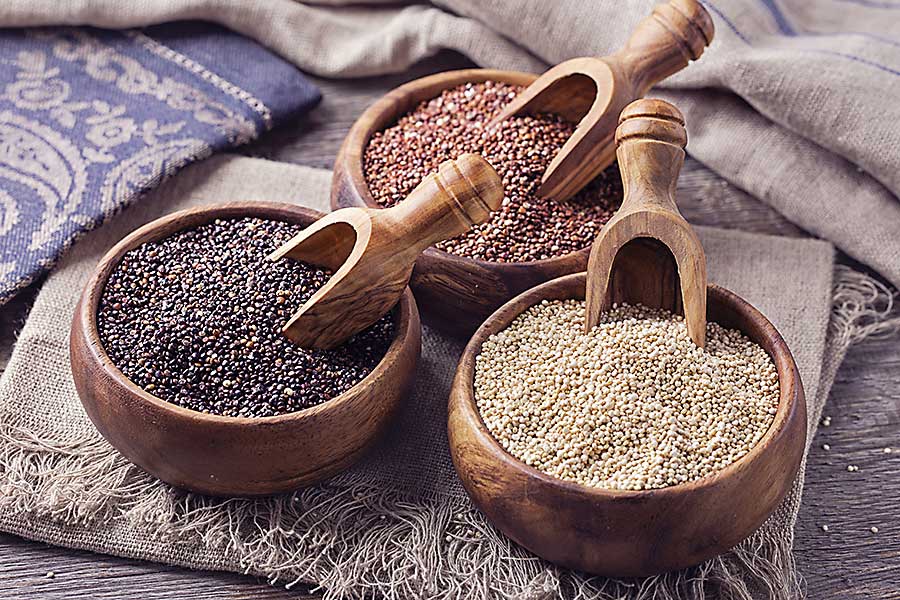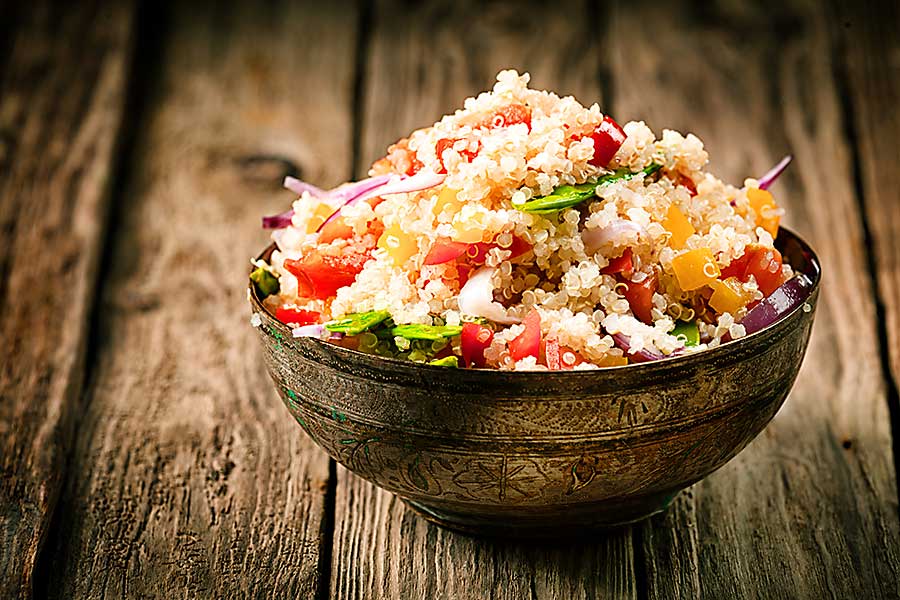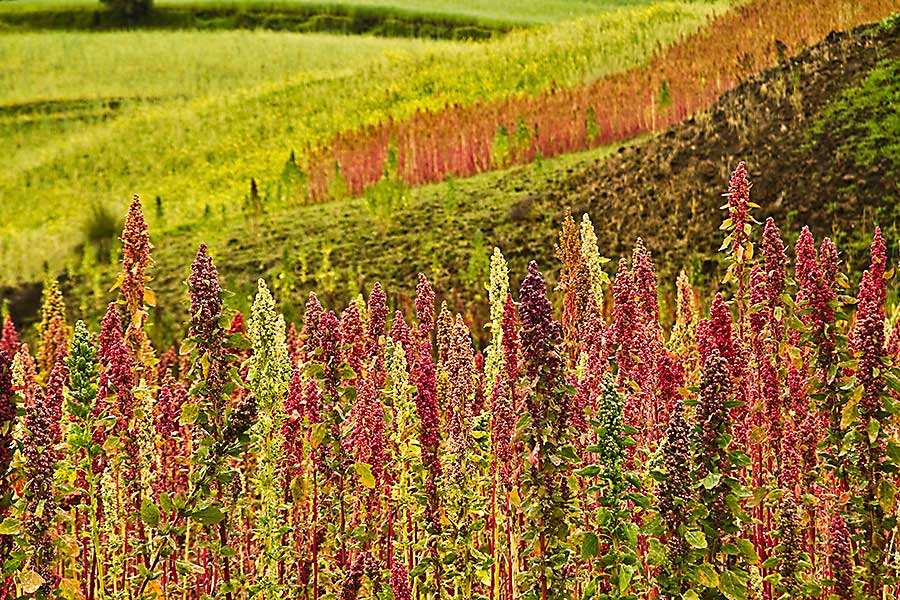Quinoa
Quinoa is an annual plant species that is part of the amaranth family. It is a type of grain crop that is cultivated for its edible seeds, which are similar to cereals. Quinoa seeds are often used in cooking as a substitute for rice and groats, carrying a nutty and earthy flavour with a slightly chewy texture. Quinoa has been prized in contemporary cooking for its high protein content and nutritional profile. It also does not include gluten, making it a suitable substitute for people with celiac disease. Quinoa has become so popular since 2006 that its crop prices tripled in just 7 years.
2013 was declared the ‘International Year of Quinoa’ by the United Nations General Assembly. The UN recognised the Andean people for their preservation of quinoa through practices and knowledge of living harmoniously with nature. According to the UN, quinoa could play a role in achieving Millennium Development Goals by providing food security and nutrition while eradicating poverty.
History of quinoa
Quinoa has been a staple of Andean food for thousands of years. However, it only became known to the rest of the world in the mid-2000s. The crop was first domesticated by the Andeans around 3-4,000 years ago and was considered to be sacred by the Incas. Quinoa was referred to as the ‘mother of all grains’, or chisoya mama. When examining its nutritional profile it’s no wonder that quinoa was so highly prized by the Inca.
In fact, it was held in such high esteem that the first seeds fo the season were sown by the emperor of the Inca. According to legend, he would use tools made of gold to sow the first seeds. When the Spanish invaded South America, they tried to suppress the growth of quinoa. It was considered to be a ‘food for Indians’ and was used in indigenous religious ceremonies. Due to their suppression of indigenous culture, the Spanish even forbade cultivation of quinoa at one point. The Incas were forced to cultivate wheat during this period instead.
Health benefits of quinoa
Quinoa bares a remarkable nutritional profile boasting several minerals. It is this health profile that has made quinoa so popular around the world. Besides being gluten-free, quinoa is also high in protein and fibre and is one of the few plant-based foods that contains all nine essential amino acids. One cup of cooked quinoa contains 8 grams of protein, 5 grams of fibre, manganese, magnesium, phosphorus, folate, copper, iron, zinc, potassium, vitamins B1, B2, B6, E, B3, and calcium. In total, one cup will hold around 222 calories, 39 grams of carbohydrates and 4 grams of fat.
Quinoa also contains thousands of trace nutrients, including the antioxidant flavonoids. Two of these flavonoids, quercetin and kaempferol, are known to fight inflammation, viruses, cancer, and depression in animal studies. Quinoa also has a GI level of 53, which is fairly low.
The difference between red, brown, black quinoa
Quinoa is available in three different colours: red, white, and black. It can also be purchased in ‘tri-colour’ varieties with all three colours. White is the most common colour of quinoa and recognised for having a lighter, fluffier texture with a more delicate taste than other quinoa colours. For this reason, white quinoa is considered the best substitute for rice. Red quinoa has a richer, nuttier flavour and slightly more chewy texture than white quinoa. It is considered to be the best option for cold salads. Black quinoa is slightly sweeter and earthier in taste than white quinoa. The three types of quinoa do not differ greatly. Red and black quinoa require longer cooking times than white quinoa and have a more intense flavour. They also retain their shape much better, which is why they are often used in cold salads.
Private Chefs, Art of Dining
CHEFIN is a private chef platform that’s reimagining social dining.
You can easily connect with 1 of our 250 private chefs and treat your guests to restaurant-quality dining experiences in the comfort of your own home, office or chosen venue. From high-end dining to quirky social food experiences, the CHEFIN platform makes it effortless for you to access gourmet food that’s worthy of a Michelin-starred establishment.
What you get:
-
- Your very own private chef who is vetted and insured,
- A customised menu for your needs,
- 24/7 concierge support,
- Complete post-dinner cleanup,
- A fun, stress-free, and unforgettably dining experience!


